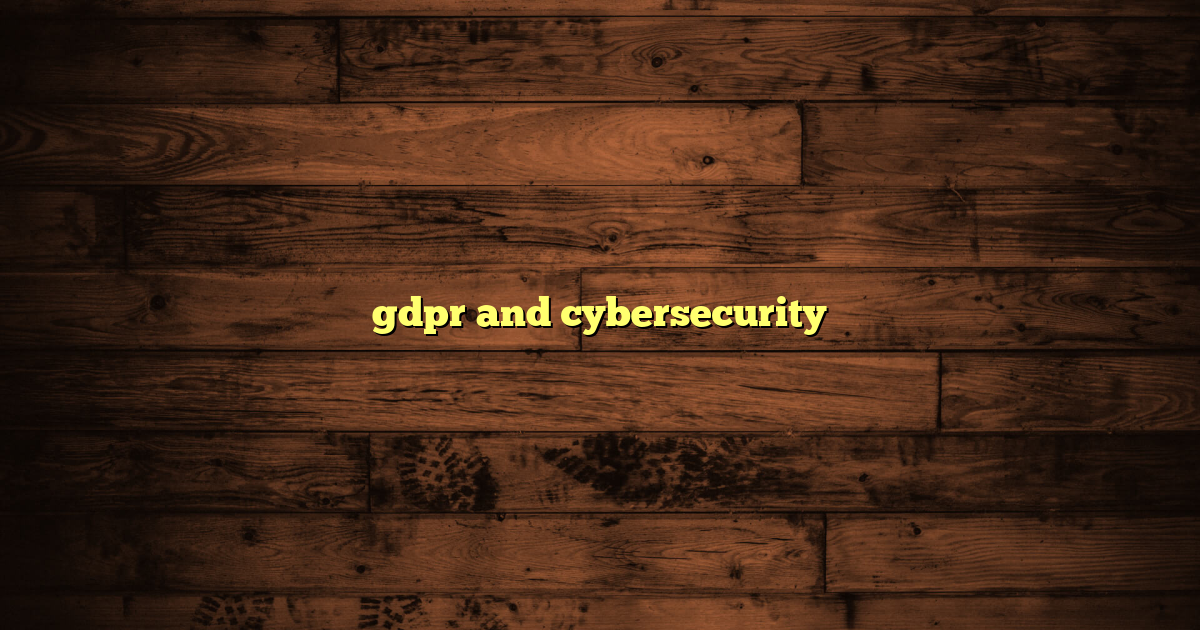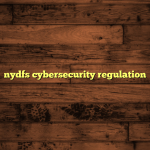gdpr and cybersecurity
Table of Contents:
- What is GDPR?
- How Cybersecurity Supports GDPR Compliance
- Technical Safeguards
- Organizational Measures
- Challenges at The Intersection of AI & Privacy Laws
- Why Does This Matter?
- Practical Steps Organizations Can Take
- FAQ
GDPR and Cybersecurity: Protecting Personal Data
Is your business prepared to navigate the complexities of data privacy? The General Data Protection Regulation (GDPR) alongside capable cybersecurity practices is essential for data protection in the current digital age. GDPR presents a framework for legal compliance relating to privacy protection of data, while cybersecurity offers the technical protection that assists establishments in adhering to these regulations.
What is GDPR?
It is a comprehensive data protection law by the European Union that took effect in 2018. This set of rules affects not only companies situated within the EU territories – it extends to every organization across the globe which processes information of EU residents . GDPR seeks to empower individuals, allowing them a degree of control over their personal data. It also puts responsibilities on organizations in how they gather, keep safe, process and distribute this data. Some important aspects of GDPR:
- Consent – Before collecting or processing an individual’s personal data, organizations should get explicit consent from them. This consent must be straightforward, specific, easy to comprehend, moreover, simple to withdraw at any point .
- Data Subject Rights – Individuals possess rights like accessing their data, rectifying mistakes, removing information under certain conditions (the “right to be forgotten”), restricting data processing actions, as well as getting their data in a portable format .
- Breach Notification – A serious breach happens, that compromises personal details that may hurt someone’s rights, as well as freedoms, the organization has a maximum of 72 hours to report it to both the impacted people together with a supervisory authority .
- Data Protection Impact Assessments (DPIAs) – In the case of high-risk processing events, similar to extensive profiling, organizations are required to conduct a DPIA that involves analyzing risk, together with creating mitigation strategies, alongside proper documentation .
How Cybersecurity Supports GDPR Compliance
Central to GDPR is the need for effective protection of personal details, preventing unauthorized access or breaches. Cybersecurity becomes a fundamental instrument, making it feasible to adhere to these regulations.
Technical Safeguards
Cybersecurity is about applying practical solutions such as encryption (securing sensitive info with a code so only authorized users are able to read it), safe access controls (guaranteeing that specific users only gain access to systems), firewalls, intrusion detection systems (IDS), antivirus software, next to additional tools to protect stored, otherwise transmitted personal data against attacks that could come from hacking or even malware attacks . They protect a few GDPR principles:
- Integrity & Confidentiality – Makes certain that nobody changes personal data unless they have permission, along with only authorized people access it.
- Availability – Checks that authorized users gain simple access to needed data without causing disturbances.
Without suitable cybersecurity procedures, technical vulnerabilities would leave establishments exposed legally and operationally.
Organizational Measures
Apart from mere tech, there is the element of readiness: training staff about being careful in terms of security, setting up protocols concerning managing passwords, limiting employee privileges in accordance with roles, regularly modernizing program updates, conducting audits – they all lower the possibility of human error, a major reason for breaches. This demonstrates that organizations are serious in taking actions rather than only acting after an incident .
Challenges at The Intersection of AI & Privacy Laws
Newly developed tech like artificial intelligence adds complication. AI needs a large amount of data from users for training models, involving personally identifiable information (PII). While using AI systems in cybersecurity has pluses, it may also cause conflicts with laws that protect privacy such as GDPR, especially because of transparency concerns involving automated decision-making processes. There are also difficulties obtaining consent when utilizing behavioral analytics run using AI algorithms . When using AI solutions, organizations have to formulate plans that balance creativity, with adherence to required regulations. Technology alone is insufficient without suitable governance, one that is in line with what is legally required.
Why Does This Matter?
Failure to follow GDPR rules causes severe consequences: penalties range as high as €20 million, or 4% of global annual turnover, whichever total is greater. Ignoring guidelines or defenses against cyberattacks is therefore financially risky, not to mention how it can hurt a reputation. More considerations:
- Customers need to have confidence, knowing that their private details will be handled with care.
- A data breach may undermine the level of trust very rapidly – thereby leading to lost business.
Therefore, using good cybersecurity procedures in normal operations becomes a solid approach. It is also necessary as an essential survival strategy based on rules like GDPR.
Practical Steps Organizations Can Take
These are tips for blending effective solutions:
- Do regular risk evaluations, giving attention specifically to the methods by which your establishment accumulates, handles, as well as stores PII of EU residents.
- Install encryption on every device where data is kept, including the backups.
- Use multi-factor authentication whenever you are able to, especially for admin accounts, one that governs critical pieces of infrastructure.
- Give continuous education to your employees, training them about phishing strategies since social engineering is a principal reason behind a lot of breaches regardless of improved technical protections.
- Keep logs that document who gained access to what form of user-data, next to the duration for which it was used, which could assist with investigations down the road with accountability under Article 30(1) .
- Develop incident response schemes, which outline actions to take after uncovering a breach that covers timeline notifications as necessary by regulation .
In short, GDPR outlines *what* has to be protected legally. *How* protection is achieved hinges on successful cybersecurity applications, combined with institutional caution. Together, these factors establish a strong protection, keeping safe individual privacy rights amid rising threats worldwide.
FAQ
What is Personal Data Under GDPR?
Personal data means any information relating to an identified or identifiable natural person. It includes names, email addresses, location data, online identifiers, along with more.
Who Is Affected by GDPR?
GDPR affects any organization that processes the personal data of EU residents, regardless of where the organization is located. It applies to both controllers (those who determine the purposes and means of processing) and processors (those who process data on behalf of controllers).
What Happens if I Don’t Comply with GDPR?
Non-compliance with GDPR can result in significant fines, up to €20 million or 4% of your global annual turnover, whichever is higher. Additionally, you might face reputational damage and loss of customer trust.
Resources & References:
- https://www.techtarget.com/whatis/definition/General-Data-Protection-Regulation-GDPR
- https://www.dataguard.com/cyber-security/compliance/
- https://www.itgovernance.eu/blog/en/the-gdpr-understanding-the-6-data-protection-principles
- https://www.zscaler.com/blogs/product-insights/ai-cybersecurity-navigating-gdpr-privacy-laws-and-risk-management
- https://www.onetrust.com/blog/gdpr-compliance/





